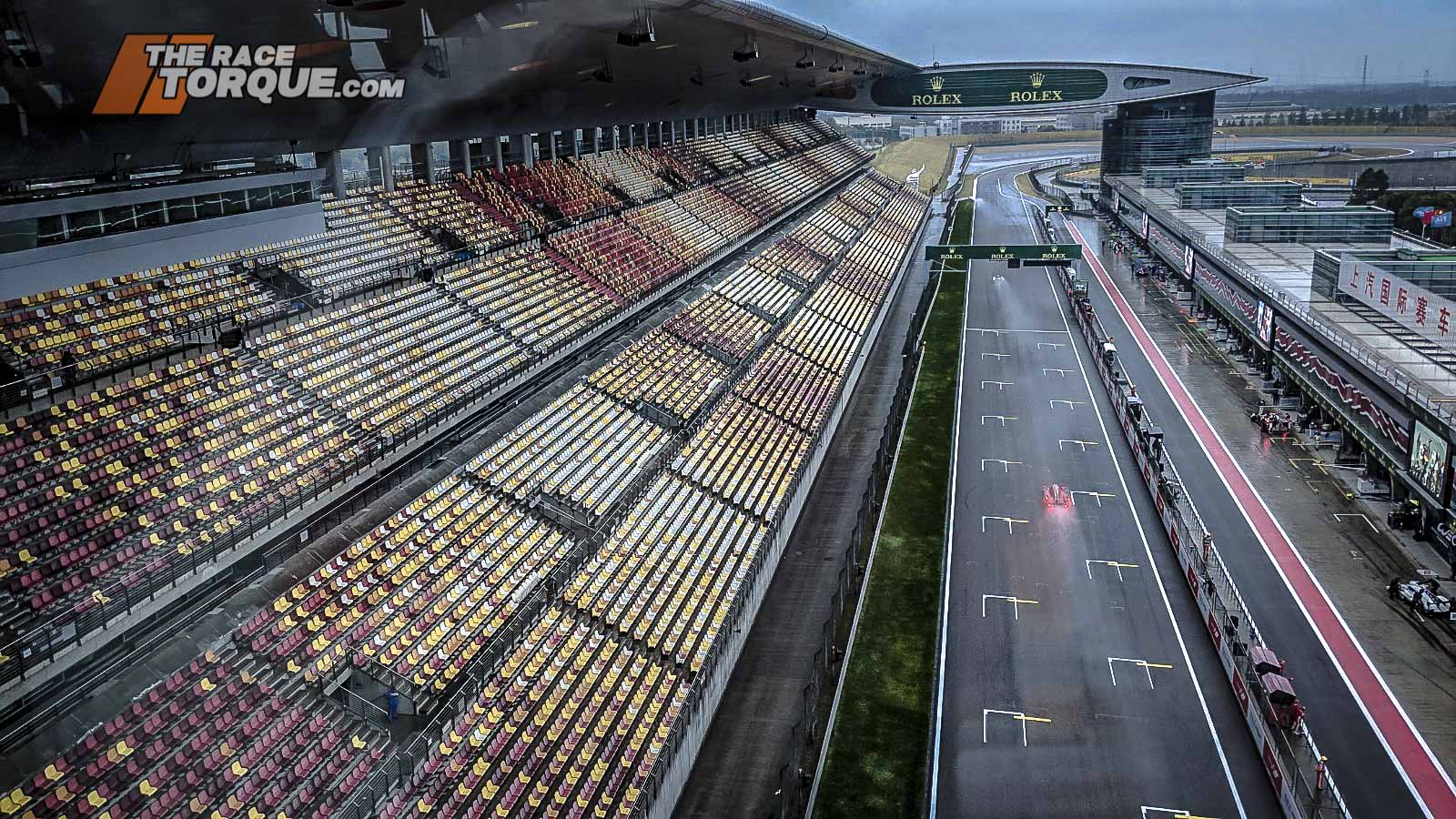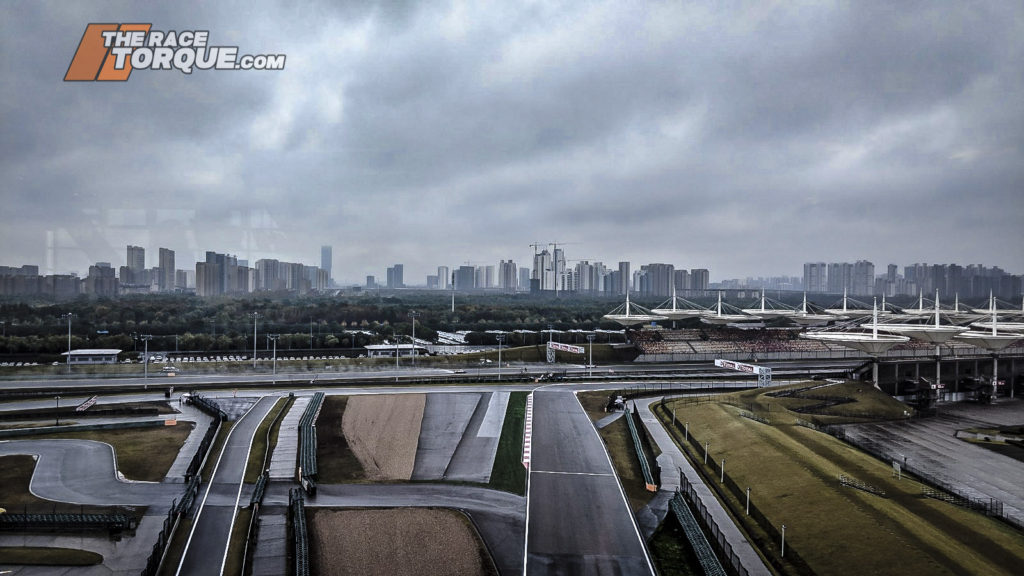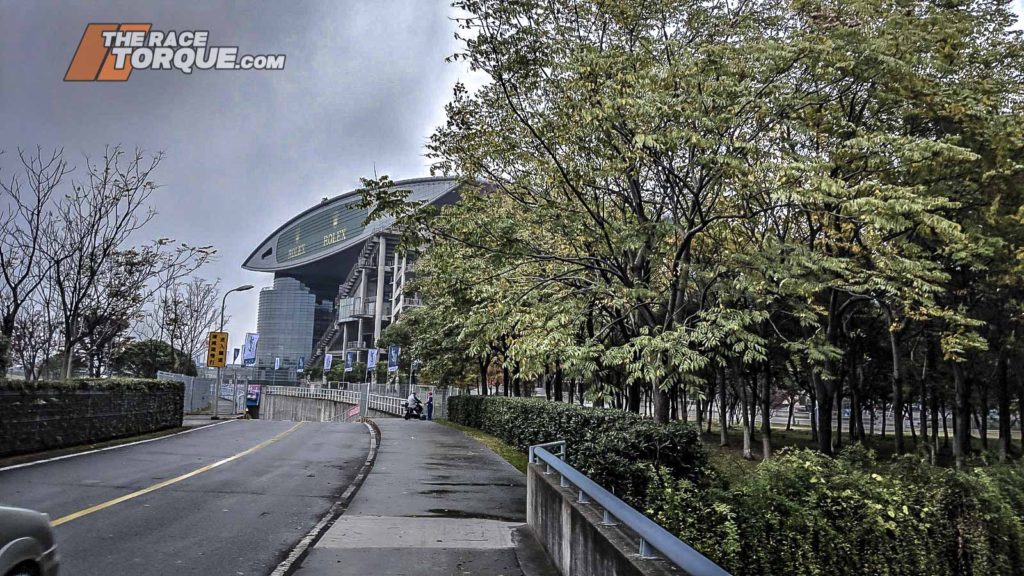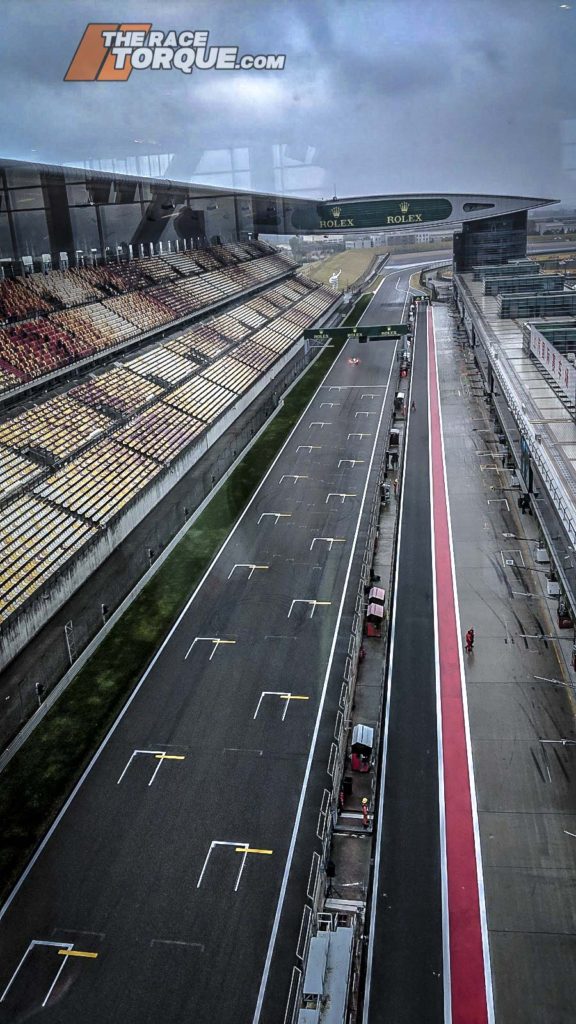The First Time Coronavirus Impacted Supercars

While the 2020 and ’21 Supercars calendars have been thrown into disarray by COVID-19, it is not the first time a Coronavirus has impacted the sport.
Between late 2002 and mid-’03, the Severe Acute Respiratory Syndrome, or SARS, was sweeping China, a country V8 Supercars was scheduled to visit for the first time in 2004.
“The Most Significant Move in Australian Sport”
Exclaimed AVESCO Chairman Tony Cochrane at the time.
Following 18 months of behind the scenes negotiations, V8 Supercars shocked the industry in February 2003 with the announcement of a five-year deal to take the Australasian series north to China from 2004 to ’08.
The deal was sealed with an eight-person delegation visiting Shanghai, including Cochrane, Garry Rogers, Channel 10’s David White, as well as CAMS representatives.
From the venue standpoint, at the time of the announcement, it was undecided if the event would be held at the 2km long, 14 turn Shanghai Tianma Circuit, which would host the WTCC in 2011, or the Formula One-grade Shanghai International Circuit, which was ultimately the facility of choice.
Backed by the Chinese Development Group, a joint venture between the Shanghai Weice Business Company and the Chinese Government, the event was to be a standalone, and not in support of the country’s F1 race.
The arrangement somewhat came out of the blue, with pundits expecting the category to visit the Middle East and South Africa, with the China deal coming complete with a significant free to air TV package into the area.
Shanghai is the most populated city in China, which at the time it had a population of 15 million people, that since 2003 has grown to nearly 28 million.

“Chinese Concerns Over SARS Virus”
Read the headline in Auto Action in March 2003.
With the deadly SARS virus taking flight around the world, the scheduled signing of the final contract between the Chinese promoter and AVESCO in Shanghai would be scrubbed, raising the prospect of simultaneous ceremonies being undertaken on either side of the equator.
Andrew McLean’s story went on to quote:
“This has the potential to ruin the event if (the virus) is still hanging around. The big question would be whether something like this would come under the guidelines of a force majeure in terms of the contract. I think we’d have some trouble convincing the teams to go there if there is still question marks over the situation. It’s not simple, but we’re proceeding on the basis that this will be gone before we go to China.”
Wayne Cattach, AVESCO CEO
SARS actually made it to Australia, with six cases reported, and zero fatalities.
Fortunately, public health measures such as face masks and simple personal hygiene practices, combined with clinical isolation and quarantining, proved to be able to contain the outbreak by the start of July 2003.
Sixteen and a half years later, another strain of SARS-CoV would cause COVID-19, and the current pandemic we are living through.

The Chinese Rollercoaster
The official signing of the promotion agreement would be postponed again from July to August, with the event finally being confirmed on September 22nd 2003 to run from November 12-14 2004, which saw the meet replace Phillip Island on the V8 calendar.
The November date was an interesting call on multiple fronts; firstly weather, with an average temperature range at that time of the year being 8-16°C with rain, and secondly, it clashed with Rally Australia, a key event for host broadcaster, Network 10.
At the time, it was also mentioned that the 2005 version of the race would likely be brought forward to June, and enjoy much warmer weather.
Also of note in September ’03 was a replacement of the original promoters, who were refunded their deposit, replaced by the Shanghai Greenland Sports & Culture Development Company Ltd, who paid a fresh deposit to secure the event.
The Greenfield Group wasn’t exactly in the business of promoting motorsport events, it was a building development company, with large successful Chinese companies such as this setting up sporting and cultural arms to give something back to the community.
To guide them along the way, the Greenland Group engaged Octagon to look after the day-to-day operations of orchestrating the event.
There were plenty of rumblings regarding the readiness of the venue, with 3,000 workers on site to transform the former rice paddy into the latest Tilke-dome, while other questions were asked of the qualifications of the local team of officials, with one solution being to import experienced Malaysians for the event.
Come the start of April, the November ’04 version of the race was put on the backburner, with considerable logistical issues behind the postponement.
“But I am very comfortable sitting here. We have substantial money in our bank. I’m very comfortable sitting here that we’ve got the right promoter now.”
Tony Cochrane in Auto Action
The closeness of the debut major event at the track, the Chinese Grand Prix in late September, was noted as a significant hurdle, with items such as the imported officials from Malaysia and Macau unable to back up in such short order, with Cochrane noting a dozen similar small issues led to the decision.
For 2004, the Shanghai round was replaced by Symmons Plains, which returned to the calendar with a three-year deal sealed with $3million from the Tasmanian government.
2005: A Chinese Odyssey
In late July 2004, it really seemed like it was all systems go on the Chinese V8 dream, with a launch event at the Shanghai International Circuit featuring Mark Skaife, Peter Beattie, the Premiere of Queensland, Yang Xiaodu, the Vice Mayor of Shanghai, and 400 guests.
“Following the press conference, a grand launch ceremony was held on the circuit featuring two V8 Supercars (from WPS Racing at GRM) and pit crews brought in from Australia for the launch event. Two drivers Alex Yoong and Garry Rogers then drove a historical first lap launching V8’s historic first circuit in Asia. The drivers were followed on the track by a hot lap with the representative from The Shanghai Administration of Sports and Premier Beattie. The event concluded with highlights from some of the V8 Supercar Championship Series most exciting moments and a fashion show featuring V8 Supercar models.”
Octagon Shanghai Press Release
By December, the event was picking up momentum, with 28 Chinese dignitaries being treated to a trip to Eastern Creek for the V8 Supercars season finale, which also attracted various state premieres and federal MPs, keen for a piece of the trade and economic pie.
A similar junket to the season-opening Clipsal 500 attracted comparable local political attention.
At this time, it was exclaimed that 5,000 Aussie would likely make the journey north, joining a total crowd of 100,000 on race day.
While on the surface things appeared cordial, behind the scenes, a mad scramble was on in earnest.
Gordon Lomas’s book, “V8 Supercars The Whole Story” documents the efforts put in by V8 Supercars Operations Manager Kurt Sakzewski, who was seconded to take over from Steve Betts in leading Octagon’s motorsport operations in Shanghai.
The most basic elements of the event had to be drawn together, such as sourcing medical infrastructure, accommodation for the 600 V8-affiliated folks travelling with the circus, acquiring all of the flammable liquids you can’t pack in a jumbo jet, and so on.
And this was on top of an infuriating array of cultural and technical issues.
In the end, the whole show was nearly derailed at the last minute by a missing length of specialised fibre-optic cable to deliver the TV broadcast. After a nine-hour search, a stack of the missing cable was found in a forgotten back room at the circuit…
The event essentially became the template for flyaway rounds in the future, to Bahrain, the USA, Abu Dhabi and New Zealand, with $500,000 worth of transport infrastructure in place, including the racks for the race cars and pallets for team kit, as well as a thorough checklist for organisers to work through.
In April, it was revealed that a planned wildcard for Japanese GT ace James Courtney had been scuppered, with Team Buick branding instead appearing on the HSV Dealer Team car of Rick Kelly, which for logistical reasons, he also campaigned at the preceding Eastern Creek event.
Other cars wore alternate warpaint too, including the Triple Eight Falcons with Betta Electrical swapped out for LG, while the Perkins Castrol cars featured some local Chinese branding.
Todd Kelly would win the weekend, Greg Murphy went for a fly, and Mark Winterbottom nearly wore a length of errant drain cover. But all of that is a story for another day…
Ultimately, 2005 was the end of the line for the event, with the 2006 date causing issues from the outset of its announcement.
“The proposed June date of the V8 Supercar Championship Series round in Shanghai, China, has been rejected by the Federation of Automobile Sports of China (FASC), meaning a new timing of the event will need to be negotiated.
V8 Supercars Australia has been informed that the proposed date of June 10-12 does not suit the Chinese calendar and that the FASC had informed the world governing body Federation Internationale de L’Automobile (FIA) to withdraw it from the 2006 calendar.
The date of the Chinese round has been always conditional with the FASC since it was first proposed at the launch of the 2006 V8 Supercar Championship Series calendar in October.
V8 Supercars Australia will now negotiate with the FASC, event promoter the Greenland Group, the Shanghai International Circuit and the Chinese Ministry of Sport about a new date proposal.
Those seeking to attend the Shanghai round are asked to delay making their bookings until a suitable outcome between all parties concerned is reached.
V8 Supercars Australia is very disappointed with this outcome and remains hopeful this issue can be resolved.”
V8 Supercars release, December 2005
In February 2006, Wayne Cattach flew to Shanghai for crisis talks, with the promoter looking to move the event to later in the year, a difficult task at the time for V8 Supercars.
By the Clipsal 500 in March, the event was in the can, with the slot on the calendar replaced with the very much more local Winton Motor Raceway.
ALL IMAGES: Richard Craill








